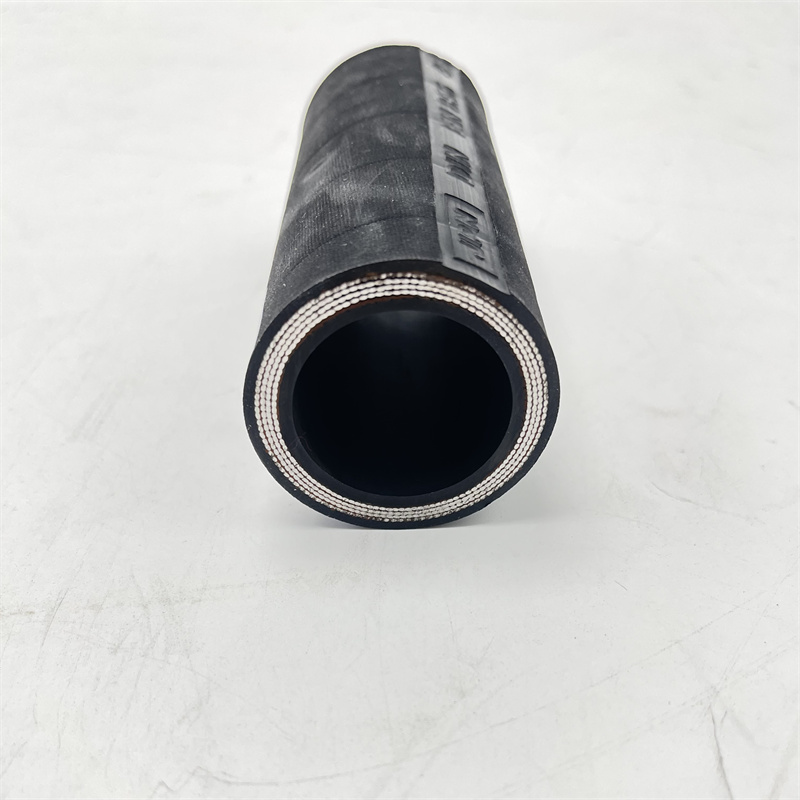335345435
Aug . 19, 2024 15:51 Back to list
High-Performance Thermoplastic Rubber Hose for Versatile Applications and Enhanced Durability
Understanding Thermoplastic Rubber Hose Versatility and Applications
Thermoplastic rubber (TPR) hose is a versatile and valuable product used in various industries due to its unique properties and performance characteristics. TPR combines the elasticity of rubber with the processing advantages of thermoplastics, making it an ideal choice for applications requiring flexibility, durability, and ease of manufacturing.
Composition and Properties
The composition of thermoplastic rubber is a blend of natural or synthetic rubber with thermoplastic materials, such as polyolefins or styrenic block copolymers. This combination allows TPR to exhibit rubber-like elasticity while remaining processable like plastics. As a result, TPR hoses are flexible, lightweight, and resistant to UV light, chemicals, and weather elements. These characteristics make them a preferred choice for applications in harsh environments where traditional rubber hoses may fail.
Manufacturing Process
The manufacturing process of thermoplastic rubber hoses involves extrusion, which enables the production of hoses in various sizes and shapes. This method offers high precision and consistency, ensuring that each hose meets specific performance standards. Additionally, TPR hoses can be produced in different colors, providing aesthetic options for manufacturers and users alike. The ability to recycle TPR materials further enhances its appeal in an increasingly environmentally conscious market.
Applications Across Industries
Thermoplastic rubber hoses are used in a wide array of industries due to their adaptability and performance
. Some of the notable applications include1. Automotive Industry TPR hoses are frequently utilized in automotive fuel systems, air intake systems, and coolant lines due to their flexibility and resistance to heat and chemicals. Their lightweight nature contributes to overall vehicle efficiency and performance.
thermoplastic rubber hose

2. Construction and Manufacturing In construction and manufacturing, TPR hoses serve as effective solutions for conveying water, air, and various fluids. Their durability and abrasion resistance make them suitable for high-energy environments.
3. Agriculture TPR hoses are employed in agricultural applications, such as irrigation systems and pesticide spraying. The hoses’ resistance to chemicals and UV light ensures reliable performance under diverse environmental conditions.
4. Medical Devices The medical field also benefits from thermoplastic rubber hoses, particularly in the design of medical tubing and devices. TPR’s biocompatibility and ease of sterilization make it suitable for applications involving patient safety.
5. Food and Beverage Industry Certain grades of thermoplastic rubber are approved for food contact, enabling their use in food processing and packaging applications. Their resistance to various substances ensures that they meet safety and hygiene standards.
Advantages of Thermoplastic Rubber Hose
The primary advantages of thermoplastic rubber hoses include flexibility, lightweight construction, and excellent resistance to heat, UV light, and chemicals. Additionally, TPR hoses do not require curing like traditional rubber, leading to faster production times and lower manufacturing costs. Their ability to withstand repetitive bending and flexible movement without kinking makes them ideal for dynamic applications.
Conclusion
In summary, thermoplastic rubber hoses represent a significant advancement in hose technology, blending the best features of rubber and plastic to create a highly functional product. Their extensive range of applications across various industries underscores their importance in modern manufacturing and engineering. As industries continue to innovate and demand higher performance materials, TPR hoses are likely to play a crucial role in meeting these challenges, ensuring efficient operations while maintaining versatility and durability. Whether in automotive, construction, agriculture, or healthcare, thermoplastic rubber hoses are poised to remain an integral component of many systems, contributing to efficiency and reliability in an ever-evolving market.
-
SAE 100 R17 Black Smooth Cover Hydraulic Hose
NewsMar.07,2025
-
SAE 100 R17 Black Smooth Cover Hydraulic Hose
NewsMar.07,2025
-
SAE 100 R17 Black Smooth Cover Hydraulic Hose
NewsMar.07,2025
-
SAE 100 R17 Black Smooth Cover Hydraulic Hose
NewsMar.07,2025
-
SAE 100 R17 Black Smooth Cover Hydraulic Hose
NewsMar.07,2025
-
steel wire braided hydraulic hose
NewsMar.07,2025



